For parents who have never breastfed before, breastfeeding pain is a big concern. We’ve got the lowdown on what you can expect with your letdown.
“Should it hurt this much?”
“I thought it would get better by now.”
“This is not what I expected.”
If you’re just starting your breastfeeding experience, the whole thing is a new sensation. Latching, letdowns, engorgement—if you haven’t breastfed, then you don’t have a good point of reference. So if someone tells you that breastfeeding hurts, why wouldn’t you believe them?
Let’s stop right here: Breastfeeding shouldn’t hurt.
What should it feel like? Some parents describe the feeling as a tugging or pulling sensation. Some have a tingly, warm, or electric sensation during letdown. Others describe the feeling of breastfeeding as a relief.
Depending on your baby’s latch, breastfeeding position, how full of milk your breasts are, and many other factors, there’s a vast range of sensations in breastfeeding. But while it can take time to adjust, breastfeeding shouldn’t be uncomfortable after the first few weeks.
Embarking on your breastfeeding journey means learning a whole new way of using and sharing your body. It’s normal for this new activity to feel awkward at first, and getting used to it can require some adjustment.
Like taking up a new form of exercise, breastfeeding may cause some mild soreness and discomfort at first.
There’s a whole range of reasons for sore nipples in breastfeeding, and some of them require more assistance than others. We always tell breastfeeding parents to expect a little bit of nipple tenderness at the very beginning of breastfeeding—it’s something that your nipples aren’t used to yet!
An IBCLC can work with you to diagnose the cause of any pain in your nipples. They can also help to make breastfeeding more comfortable by recommending different positions for nursing, assessing your baby’s latch and suck, weighing the pros and cons of controversial options like nipple shields, and providing techniques for managing and soothing pain.
Early breastfeeding nipple pain should never be excruciating, though, nor should it involve cracked, blistered, or damaged nipples.
Nipple problems are among the common breastfeeding problems parents may experience in the early days. They are often related to shallow latches and the baby not getting enough breast tissue in their mouth. This should improve as you practice your latching and positioning technique, but persistent pain is a sign that you could benefit from some additional support.
According to Nest Collaborative IBCLC Lori Theisen, “Remember, it’s called BREASTFEEDING, not NIPPLEFEEDING. We want the baby to take as much breast tissue in the mouth as possible. The nipple is just the faucet for the milk, not the milk factory.”
But what if the pain doesn’t improve after working on the latching and positioning technique? If you see signs of nipple injury, like sores or bleeding, your baby may be struggling with an oral restriction, such as tongue or lip tie. In those cases, book an appointment with an IBCLC to get help—it can make a significant difference in your breastfeeding comfort. Your IBCLC will thoroughly assess both you and your baby to get to the root cause of the pain, and work with you to come up with a plan to address it.
Depending on the root causes, an IBCLC’s plan for addressing nipple pain might include:
You may have noticed some hormonal breast changes during your pregnancy, but the changes don’t stop there. Postpartum engorgement is yet another change that is controlled by hormones, and it can happen whether or not you decide to breastfeed.
Engorgement often occurs in the first few days after delivery as your colostrum transitions into mature milk. This transition can create uncomfortable breast fullness, also known as engorgement, for some parents.
If you experience engorgement, you’ll notice that your breasts have become tight, firm, and maybe even a bit shiny. They may be warm and slightly lumpy, and, yes, they may be painful.
But remember: the pain of engorgement is short-lived, typically subsiding within 48 hours. As you nurse or pump, your breasts will feel better. (Although they may be a little tender from the initial engorgement.) IBCLCs are well versed in issues like under- and oversupply, and can advise on how to manage engorgement while protecting your milk supply and maintaining a feeding routine that works for you and your baby.
As your milk comes in, nurse (and nurse and nurse!) and stay hydrated. To relieve discomfort and inflammation, you can take an anti-inflammatory medication such as ibuprofen and apply a cold compress or ice pack after feedings.
Reverse-pressure softening or hand expression can be a helpful technique to soften the breasts before latching your baby. If you are having difficulty getting the milk flow started for a feeding, apply a warm, wet compress to your breasts or take a hot shower to improve circulation and milk flow.
Gentle lymphatic breast massage is also another helpful tool for lessening engorgement pain. Your IBCLC will be able to demonstrate therapeutic breast massage techniques.
Not all breastfeeding parents have engorgement. While it’s more common with new parents breastfeeding for the first time, some parents don’t experience it to the same degree—or even at all. This is also normal!
On the other hand, for parents who have had breast surgery—whether implants, reductions, biopsies, etc.—engorgement can be painful due to scar tissue.
Finally, parents who received IV fluids during their birth can experience fluid overload. In addition to swelling of the fingers, feet, and toes, this can also increase engorgement and make it more challenging to get a deep, comfortable latch. Pay attention to how your body feels and make sure to take extra care of yourself during this time! If you’re concerned about what’s normal, it’s important to ask questions of lactation experts.
Let’s start by saying this: asking for help along your breastfeeding journey is always a good idea. Whether you have a clinical issue or just need support, your IBCLC’s job is to help you figure out how to find your way to success.
As you may be realizing, there are varying types and levels of breastfeeding pain that parents may encounter, whether they’re on their first go-around or breastfeeding for the second or third time.
Let’s look at examples of breastfeeding pain that really need to be addressed right away, ideally with the help of an IBCLC who is up on the latest evidence-based practices and standards of care.
Ductal narrowing, formerly known as “plugged” or “clogged” ducts, can be painful, but thankfully it can successfully be treated at home most of the time.
Ductal narrowing is characterized by a small, hard lump in your breast. It is usually palpable, and is typically sore or painful. The root causes for ductal narrowing are related to inflammation of the surrounding breast tissue putting pressure on the milk ducts, narrowing them and reducing milk flow.
Root causes may include:
It’s essential to address the problem quickly, as untreated ductal narrowing doesn’t just prolong the pain—it can also progress to mastitis, an infection of the breast that causes systemic symptoms.
When engorgement or ductal narrowing is left untreated, it can progress to infective mastitis. Technically, the term mastitis refers to any type of inflammation of the breast tissue—which is a spectrum that includes engorgement and ductal narrowing—but here we are using the term to refer specifically to an infection of the breasts that causes symptoms throughout the body.
Mastitis is characterized by intense breast pain. Many breastfeeding parents will see hot, red, or sore spots on their breasts, or even the classic wedge of redness. Some parents experience whole-body symptoms, including:
Mastitis can become serious, and quickly. Without proper treatment, it can lead to abscesses and affect your milk supply. If you’re struggling to identify or treat a case of mastitis, reach out to an IBCLC for guidance and personalized treatment recommendations.
If you’re getting a shooting pain in your nipple and it turns white, consider that nipple blanching may be occurring.
Nipple blanching happens when blood flow to your nipple is cut off, causing a white color on the tip of the nipple, often in a stripe pattern. Not surprisingly, latching and positioning issues are a common culprit of the blanching.
Nipple blanching can be surprising, and is a sign to keep an eye on your baby’s latch—nipple blanching is more common when a baby doesn’t have enough areola in their mouth (i.e., nipple feeding, not breastfeeding!).
What about when the latch is great but nipple blanching still hurts? Like, really, really, really hurts? You might be experiencing vasospasm. Also known as Raynaud’s Syndrome, vasospasms last for longer than latch-related nipple blanching and don’t go away when you’ve fixed latch issues. The pain also might be inconsistent or come and go.
Vasospasm is more common in people with certain autoimmune conditions, and can be triggered by stimulants such as caffeine and exposure to cold air, i.e., when your baby unlatches. To address it, dry your nipples and immediately apply a dry warm compress to your breast right after each feeding. If it’s an ongoing problem, talk to your doctor about medication options that can help.
Thrush is a painful yeast infection that affects both you and your baby. Yeast is a natural part of the human microbiome, but can overgrow on the breasts, nipples, mouth, vagina, and bottom area—any place that is warm and moist. What’s worse, thrush spreads rapidly when the yeast is given the right conditions to grow, meaning it can transfer from parent to child and even to other household members if you’re not careful.
If you are prone to vaginal yeast infections or have recently taken antibiotics your risk of thrush is increased even further. Taking probiotics and avoiding unnecessary antibiotic use can help decrease the risk of thrush, as “good” bacteria will help naturally keep yeast overgrowth in check.
Thrush usually shows up as:
You should also be on the lookout for signs of thrush in your baby. These can include:
Thrush is entirely different from other sources of breastfeeding pain, and your IBCLC may have to look more closely to identify it. IBCLCs are sure to have seen (and helped resolve) many cases of thrush, and can offer treatment options while addressing the unique challenges of this ailment.
Thrush symptoms may take some time to resolve. In addition to the treatment recommendations from your IBCLC, make sure you:
It’s always recommended that you talk to your doctor about over-the-counter medications before taking them. If you have questions about what’s safe to take, an IBCLC can help you understand which medications are contraindicated.
There’s a lot to figure out about breastfeeding. If you’re ever wondering whether what you’re experiencing is normal or not, there’s help available—and quickly!
Book a convenient online video appointment with one of our IBCLCs today.
